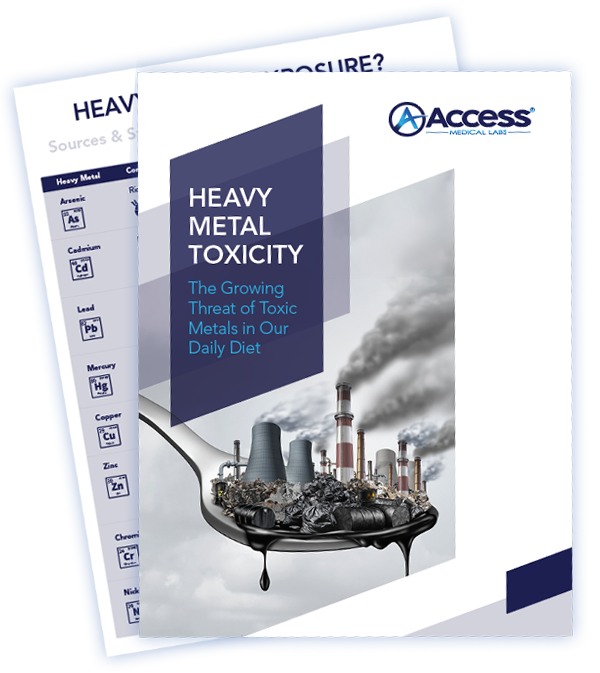
[Free Guide]
How to Identify Heavy Metal Toxicity in Your Patients
Protect your patients from the hidden dangers of heavy metal toxicity. Download our free guide to learn about sources, symptoms, and testing. Ideal for posting in your Medical Practice.

Heavy metal toxicity is underdiagnosed, but with the right information, you can stay ahead of the curve and offer your patients a healthier, toxin-free future.
Every day, your patients are exposed to hidden toxins that could be quietly damaging their health—toxic metals lurking in their food, water, and even everyday items. Toxic heavy metals, like lead, mercury, and arsenic, accumulate in the body over time, leading to a range of symptoms that often go undetected. Fatigue? Brain fog? Digestive issues? These might not just be "normal" complaints—they could be signs of heavy metal toxicity.
We’ve put together a free heavy metal toxicity guide that every healthcare provider should have in their toolbox and posted in their office. This downloadable PDF covers everything you need to know about when to consider testing your patients for toxic heavy metals and how exposure to metals like cadmium, mercury, and lead could be impacting their health. Plus, you’ll find a table detailing common sources of these metals in food, along with the symptoms they trigger.
Why Toxic Heavy Metals Testing Matters
When left unchecked, toxic heavy metals have been linked to a range of serious and chronic health conditions. Neurological disorders like memory loss, brain fog, and even cognitive decline have been tied to heavy metal exposure, particularly with metals like mercury and lead. Cardiovascular disease is another concern, as metals can damage blood vessels, increasing the risk of high blood pressure, heart attacks, and strokes. Immune dysfunction is also common, as toxic metals weaken the body’s ability to fend off infections, leaving patients more vulnerable to autoimmune disorders and chronic illnesses.
Testing for toxic heavy metal exposure can be the key to diagnosing these underlying conditions early before they escalate into more serious health problems. With the right testing, you can identify heavy metal toxicity and tailor treatment plans to prevent long-term damage.


